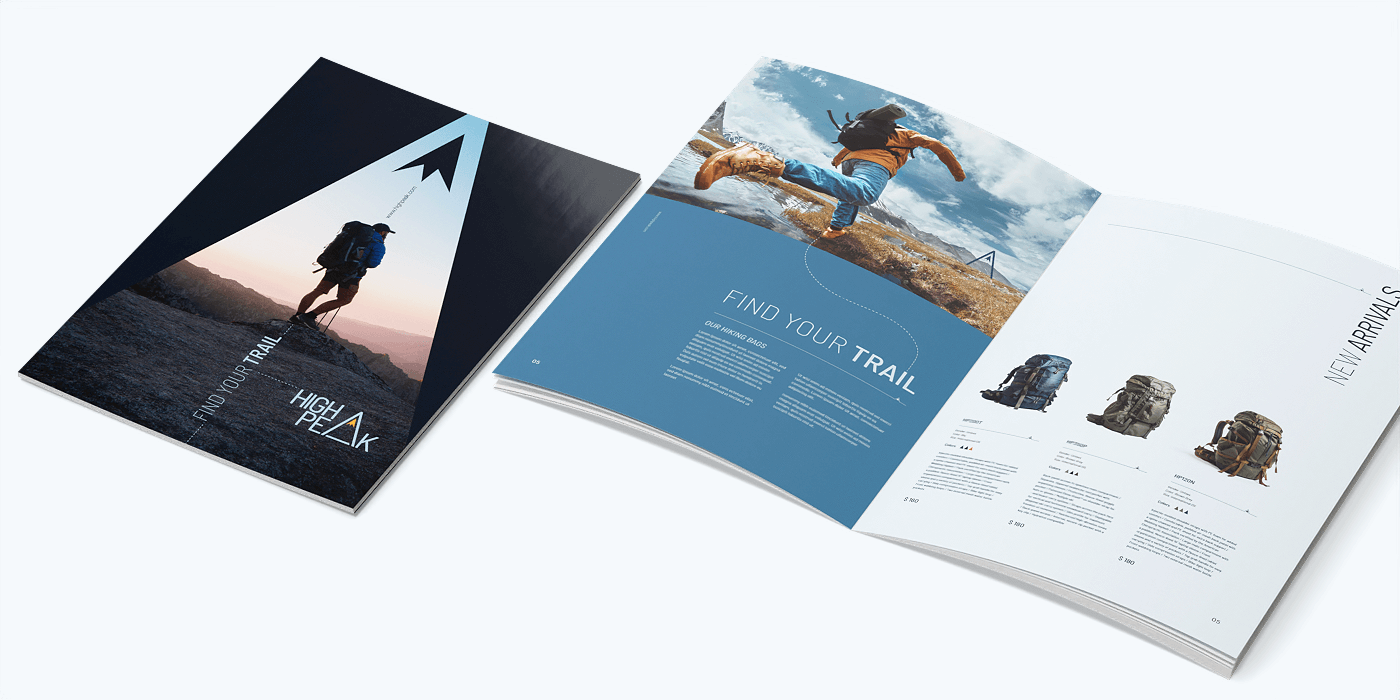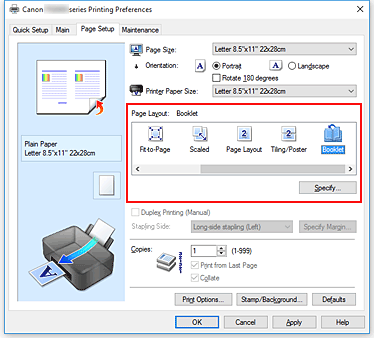Creative Finishing Techniques That Elevate Your Booklet Printing Results
Creative Finishing Techniques That Elevate Your Booklet Printing Results
Blog Article
The Crucial Overview to Comprehending Booklet Printing Options and Techniques
The procedure of brochure printing includes several considerations that can substantially influence the end product. From picking the proper format and dimension to comprehending the subtleties of binding techniques, each choice plays an essential duty. Furthermore, factors such as paper supply and printing techniques more influence the performance of the brochure. As one browses these choices, it comes to be necessary to understand just how they interconnect and what that suggests for the overall end result.
Understanding Pamphlet Dimensions and styles
When taking into consideration booklet printing, recognizing the various styles and dimensions available is necessary for achieving the preferred discussion. Booklets can be created in countless formats, consisting of saddle-stitched, spiral-bound, and perfect-bound, each offering distinctive advantages. Usual sizes range from typical letter (8.5 x 11 inches) to smaller choices like A5 (5.8 x 8.3 inches), permitting flexibility based upon content and target audience.Selecting the proper dimension can affect both the layout and visitor interaction. Bigger dimensions might fit visually driven material, while smaller sized layouts may be much more straightforward and mobile. Additionally, the number of pages affects the option of binding technique, as thicker pamphlets might call for tougher bindings. Ultimately, comprehending these facets permits a much more customized technique, ensuring that the end product aligns with the intended message and aesthetic, enhancing the overall efficiency of the communication.
Selecting the Right Paper Stock

Binding Approaches: Considerations and choices
When it pertains to binding approaches for pamphlets, several options are available, each with unique advantages. Saddle stitch binding uses a cost-efficient solution for thinner booklets, while perfect binding techniques offer a more refined try to find thicker publications. Wire-O binding stands apart for its toughness and convenience of usage, making it suitable for records that call for adaptability.
Saddle Stitch Binding
Saddle stitch binding uses a cost-efficient and functional option for setting up brochures, making it a prominent choice among publishers and companies. This binding approach includes folding sheets of paper in half and stapling them along the fold line, creating a orderly and neat appearance. Commonly ideal for brochures with a lower web page count, saddle sewing is suitable for magazines, brochures, and educational products. The simplicity of this strategy permits quick manufacturing and is commonly favored for brief runs or marketing items. Nonetheless, it is necessary to note that saddle stitch binding might not appropriate for thicker booklets, as the spinal column may not stand up under enhanced weight. In general, it continues to be a trustworthy choice for several printing jobs.
Perfect Binding Techniques
Perfect binding is a commonly made use of method that offers a specialist and polished surface to pamphlets and publications. This technique entails gluing the pages together at the back using a solid adhesive, permitting a clean side and the capacity to hold a larger number of web pages contrasted to saddle stitching. Perfect binding is especially ideal for thicker booklets, such as directories and yearly reports, where a durable, level back is desired. Furthermore, it uses the alternative for a printed cover that can be developed to improve aesthetic allure. However, considerations such as web page matter, paper weight, and the planned use the booklet ought to be taken into consideration, as they can influence durability and overall high quality.
Wire-O Binding Alternatives
Wire-O binding, recognized for its durability and flexibility, offers an excellent option for booklets that require easy web page transforming and a specialist look. This binding technique utilizes a series of metal loops that hold web pages firmly, permitting them to exist flat when open. It is particularly suitable for discussions, guidebooks, and catalogs as a result of its robust nature. Wire-O binding is offered in different shades and diameters, suiting different web page matters and thicknesses. In addition, it permits the inclusion of covers and tabs, enhancing the brochure's overall aesthetic. Factors to consider for Wire-O binding include the option of cord shade, the size of the loops, and the extent of modification wanted, every one of which can greatly affect the end product's look and performance.
Digital vs. Offset Printing: Which Is Best for You?
When picking a printing approach for booklets, recognizing the differences in between electronic and offset printing is vital. Digital printing makes use of modern technology to produce premium prints rapidly and cost effectively, making it excellent for short runs or jobs calling for quick turn-around times. It enables for personalization, providing the capability to publish on-demand with minimal waste.In comparison, balance out printing is a traditional technique that masters creating big quantities with consistent top quality. It entails moving ink from a plate to a rubber covering, after that to the paper, which leads to accurate information and lively shades. Balance out printing usually needs longer configuration times and is extra cost-effective for larger volumes.Ultimately, the choice between digital and balance out printing depends on job demands, budget plan, and preferred amount. For tiny, time-sensitive tasks, electronic might be the very best choice, while offset may be more suitable for larger, top notch manufacturings.

Creating Your Pamphlet: Tips and Finest Practices
When developing a booklet, cautious attention to format, typeface choice, and color usage can greatly boost its efficiency. A well-structured layout overviews the visitor's eye, while suitable fonts guarantee readability and share the preferred tone. Additionally, reliable use shade can stimulate emotions and emphasize crucial information, making the total design more impactful.
Picking the Right Design
Just how can one successfully choose the appropriate layout for a pamphlet? First, it is necessary to review the booklet's objective and target market. A tidy, organized design improves readability and engagement. Using a grid system can aid in lining up components regularly, developing a specialist appearance. In addition, incorporating visual power structure with differing dimensions and placements of pictures and message can assist the reader's eye and highlight vital information. It is likewise essential to leave adequate white room, which protects against congestion and permits much better emphasis. Ultimately, evaluating different designs with mock-ups can provide insight right into just how the design carries official statement out in real-world situations, making sure that the end product meets both useful and visual requirements.
Selecting Appropriate Fonts
A well-chosen font can significantly improve the total layout of a pamphlet, matching the design and strengthening the material's message. The option of typefaces need to take into consideration readability, especially for body message, as it assures the details is accessible to all readers. Sans-serif typefaces are usually favored for electronic styles, while serif font styles can provide a conventional feel in published materials. It's recommended to restrict font choices to 2 or 3 to preserve visual comprehensibility. Furthermore, font style size plays an important duty; headings must be distinct but not frustrating, while body message ought to be comfy for analysis. When selecting fonts, placement with the brochure's style and target audience is necessary for reliable interaction and visual allure.
Effective Usage of Shade
Color acts as a powerful device in booklet style, directing and forming perceptions visitor feelings. It can evoke sensations of excitement, calmness, or depend on, relying on the hues chosen. Developers need to consider color concept concepts, making certain that the chosen combination lines up with the pamphlet's message and target market. Utilizing cozy shades like red and orange can produce seriousness, while cooler tones like environment-friendly and blue foster tranquility.Additionally, comparison plays an essential duty; corresponding shades can boost readability and aesthetic allure. Uniformity in shade use across pages even more enhances brand identity and cohesion. Inevitably, reliable shade execution not just catches interest but also reinforces the pamphlet's objective, making it an essential facet of effective style.
Completing Touches: Coatings and Special Effects
While several take into consideration the material and design of a booklet one of the most essential components, the completing touches, such as finishings and special results, play a crucial role in improving its overall allure. Coatings can supply protection and resilience, ensuring that the pamphlet endures wear and tear. Matte coatings use a sophisticated, non-reflective surface area, while glossy coatings can make shades appear even more eye-catching and lively. Special results, like embossing or foil marking, add a responsive dimension that can produce an unforgettable perception. These methods can highlight certain areas, accentuating essential details or creating aesthetic interest. Furthermore, UV covering can give a high-shine finish that raises the total look.Together, these completing touches not just enhance the brochure's visual but likewise connect professionalism and trust and focus to detail, eventually leaving a lasting effect on the viewers.
Cost Considerations for Brochure Printing
Recognizing the various expense factors to consider for pamphlet printing is vital for organizations and services intending to maximize their budgets. Key aspects affecting prices consist of the choice of paper, binding, and ink techniques. Greater top quality products, such as exceptional paper or specialized inks, generally enhance the general cost. Furthermore, the dimension and web page matter of the brochure play a substantial duty; bigger pamphlets require more resources and time to produce.Another important consideration is the printing technique, whether digital or offset, as each has its own pricing framework and viability for various amounts. Organizations need to additionally consider style expenses, which can differ based on complexity and the usage of specialist solutions. Inevitably, delivery and handling charges can add to the total, especially for huge orders. By reviewing these components, companies can make educated decisions that straighten with their economic abilities while accomplishing the desired quality in their published products.
Frequently Asked Questions
What Are the Ecological Effects of Booklet Printing?
The ecological impacts of brochure printing include logging from paper manufacturing, carbon discharges from transportation, and waste generation from thrown out materials - Booklet Printing. Sustainable techniques, such as utilizing recycled paper and environmentally friendly inks, can look at here mitigate these results
Exactly How Can I Ensure Shade Accuracy in My Booklet?
To ensure color precision in a brochure, one need to use calibrated displays, employ professional shade profiles, perform test prints, and pick top notch printing services that use color matching and proofing alternatives for best outcomes.
What Is the Typical Turn-around Time for Booklet Printing?
The normal turnaround time for brochure printing differs depending upon the intricacy and quantity - Booklet Printing. Usually, it ranges from a couple of days to 2 weeks, influenced by variables such as printing techniques and finishing demands
Exist Minimum Order Quantities for Booklet Printing?

Can I Publish Brochures in Numerous Languages?
Publishing pamphlets in numerous languages is feasible. Several printing solutions offer options for bilingual or multilingual layouts, permitting reliable interaction. Mindful preparation warranties that make components suit numerous languages without endangering readability or aesthetics. Additionally, factors such as paper stock and printing strategies additional affect the efficiency of the brochure. When thinking about booklet printing, understanding the various layouts and dimensions offered is vital for accomplishing the desired discussion. When picking a try these out printing technique for booklets, recognizing the distinctions between digital and offset printing is necessary. Furthermore, the size and web page matter of the brochure play a significant duty; bigger booklets require even more resources and time to produce.Another important consideration is the printing technique, whether electronic or countered, as each has its very own rates framework and viability for different quantities. The environmental influences of pamphlet printing include logging from paper production, carbon emissions from transport, and waste generation from discarded products.
Report this page